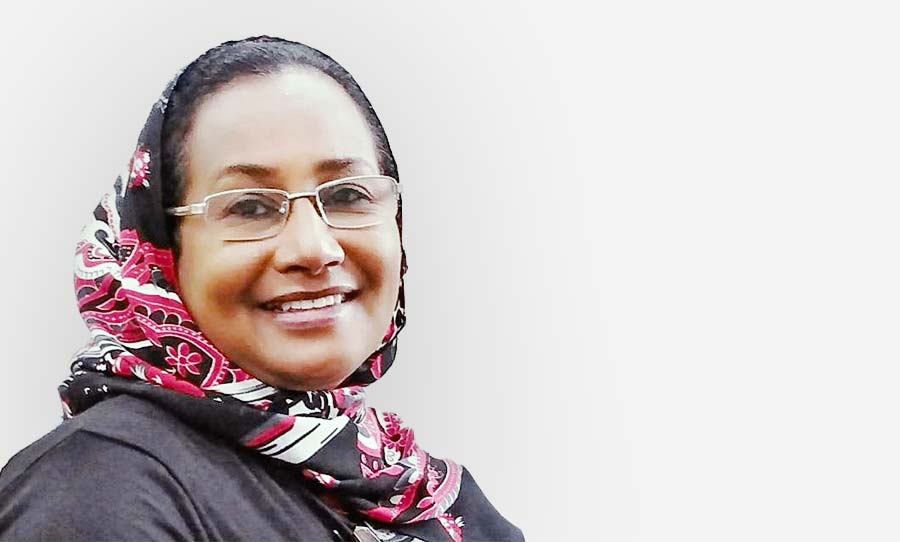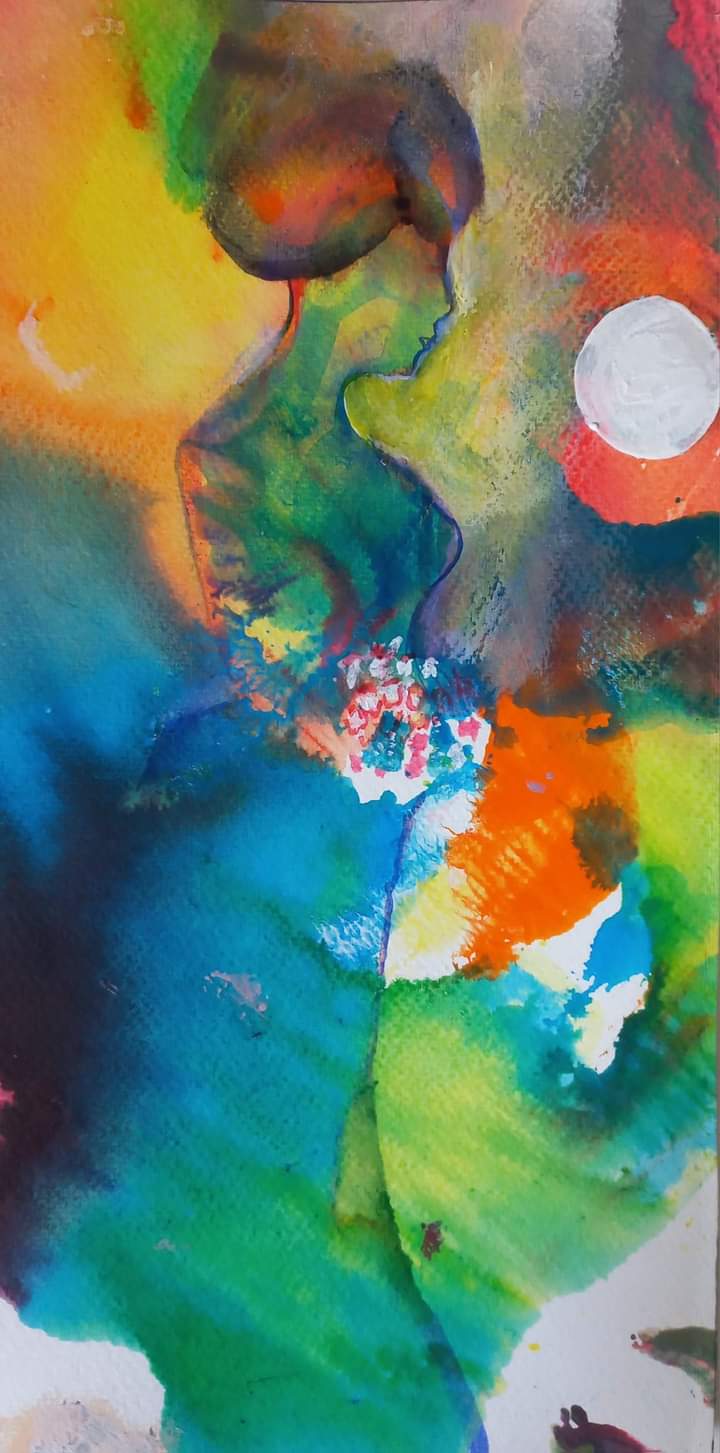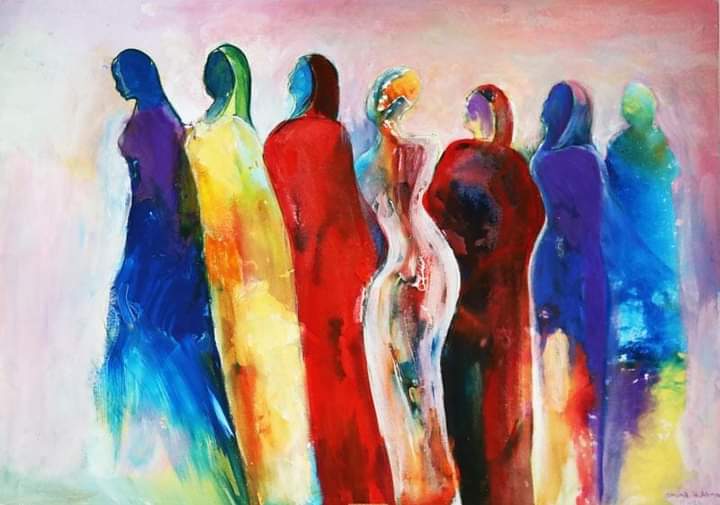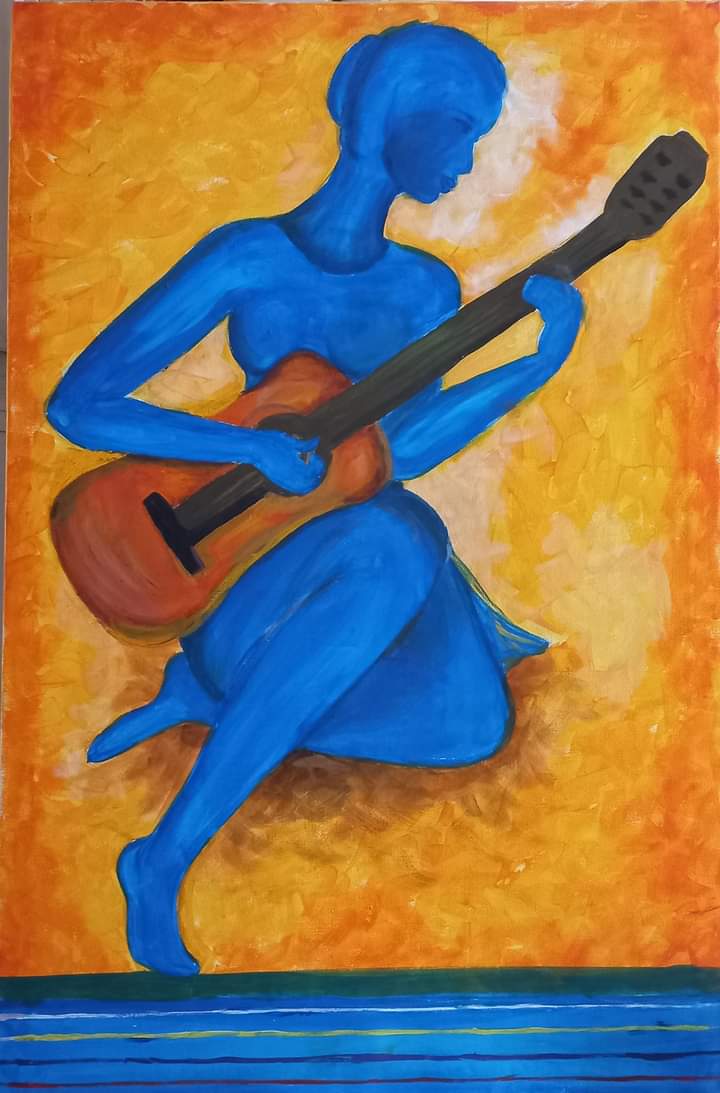
Artist Omeima Hasab Elrasoul: We have nothing to resist war except beauty
Interviewed by Asmai Bashari
The visual artist, Omeima Hasabalrasoul, has held five solo exhibitions and participated in thirty-five group exhibitions, both inside and outside Sudan. She has also organized several workshops and exhibitions within Sudan and is active in the field of womens and childrens rights.
Many critics see that her main theme in her artistic project is women, their desire for justice, freedom, and equality, and expressing Sudanese culture through warm and direct colors without much softening or blending.
The vibrant African environment with its colorful clothing, houses, and streets is also a soul of her art, enhanced by the glow of the scorching Sudanese sun.
Sculpture is also an integral part of her artistic project, using various materials such as plaster, marble, wood, metal, and cement. Her sculptures demonstrate harmony and balance between mass and space. She creates abstract and semi-abstract sculptures, using vigorous movements executed with delicate and flexible lines.
Her sculptures depict the position of women in Sudan and embody different aspects of life. Women in her sculptures are immersed in themselves, trying to rise, and she draws inspiration from Sudanese heritage throughout her artistic project.
In your project A Painting Daily in Love of the Homeland on your personal Facebook page, it is an artistic attempt against war. What do you want to say through this digital exhibition?
The idea of the project A Painting in Love of the Homeland came because, simply, we dont have anything to resist war in Sudan, destruction, and ugliness except beauty. So, I decided to publish a painting every day on my Facebook page, and I pray that God preserves Sudan and its people. I hope it becomes a public initiative, and all artists start using it to showcase their artistic works, not only in painting but also in poetry and music because beauty stands against the killing, misery, and destruction created by war.
In Sudan, we have suffered a lot from the woes of wars and have been victims of them for a long time. We have gone through experiences of frustration on all levels. Nevertheless, resistance, in all its peaceful and artistic forms, is our only weapon in the battle for freedom, justice, and peace. We will convey it with sincerity and selflessness through presenting arts in all its forms because I believe that the artist is the spearhead in the process of change, not the politician.
As a visual artist and a concerned person, and having your intellectual stance towards this war, how do you view what is happening?
Of course, the reasons behind the Sudanese conflict are well known, the ideological disputes, right/left, and the chronic problem of identity, Arab/African. Also, the history of power and its alliances created a quasi-class, and it is well known that the level and type of education do not significantly impact collective consciousness. In addition, the colonial design of life systems and their relationship with the confused social fabric. All manifestations of conflict now are coups, revolutions, and recently, war; all are attempts for change. They all fall into the category of power struggles for authority. We, as Sudanese, are caught between continuing the power struggle or accepting projects that go beyond that, to build knowledge that establishes a democratic national future. Surely, there are some features of national projects deeply rooted in the Sudanese context, and my artistic project aims to express that and be part of this democratic national project.
In times of war, does the artistic mood, and I mean the psychological aspect, differ? Accordingly, the ideas and tools differ in producing a work of art related to the tragedy?
The idea of artistic work lies in its external appearance, while its essence is the deepest. The artists emotions in times of war and disasters increase fear, anxiety, sadness, and all these feelings provide an aesthetic and artistic depth to the work. It serves as a great incentive to pour them into the painting, expressing, for example, rejection of war and immortalizing the souls of martyrs, continuing the peaceful revolutionary action against ugliness and destruction.
Sometimes, it comes within a personal psychological context, about the artists dreams and personal desires, and themes vary around love, peace, and beauty. I would also add what concerns the receivers perspective, as they see many meanings and interpretations, the hints, elements, and symbols that constitute the artwork. The receiver adds a new aesthetic dimension, giving them the right to be a partner in creating beauty, with their emotions and feelings, which they read through the painting.
Does the feeling of the artist living inside the war differ from the one living outside it, or are both feelings one in producing an artistic work related to the tragedy?
In times of war, everyone witnesses the killing, destruction, and displacement. Every citizen who loves and cherishes their homeland is susceptible to grief, silence, and crying, seeing the nations wounds bleeding and experiencing their tragedy and that of others. In this sense, the artist does not differ much from the citizen. However, the artist must draw inspiration from this experience and reality and these events. The artist remains inside the war, captivated by securing their life from risks and searching for a livelihood, while at the same time facing difficulties in obtaining their production tools and finding a safe place to work. This is unlike the observer and follower from outside. Nevertheless, in both cases, they are partners in resisting violence and are concerned with sending one message for peace and stopping the war.




